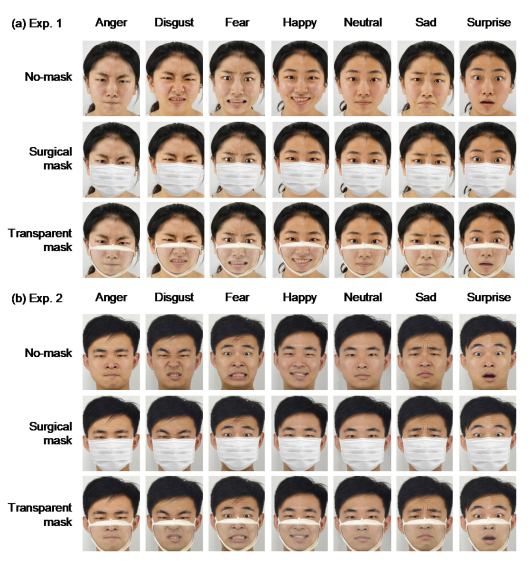Transparent masks allow perception of facial expressions, bringing a clear advantage over surgical face masks
In June 2022, authors Yuki Miyazaki, Miki Kamatani, Tomokazu Suda et al. explored the effects of wearing transparent masks on the perception on facial expressions, in a study published in i-Perception. The authors suggest that transparent masks can be a solution to standard masks.
Surgical masks block critical parts of the face
Mask-wearing has become the norm in many countries after the COVID-19 pandemic. While masks are effective in controlling infection, it is not without any downsides. Many researchers have shown that masks can negatively affect interactions due to blocking critical parts of the face.
In particular, many studies have found that masks can impair recognition of facial emotions, perception of emotional intensity, and expressing emotions. For example, being able to see the mouth region is crucial to recognize a happy face. As a consequence, communication and interactions are negatively affected.
Transparent masks can can help improve communication
Such studies often suggest various coping strategies, such as using more body language. However, the researchers of this study believe that this method “does not provide a principled solution to the occlusion of facial expressions.”
“ “People feel distressed not seeing each other’s entire face or facial expressions. This lack of face-to-face contact is not solved by body language…wearing a face shield alone is ineffective in protecting against infection. Here, we focus on transparent face masks as a solution to the occlusion of facial expressions.””
Transparent masks mitigate the negative effects of surgical masks
Examples of face stimuli used in the study randomly shown to participants: no mask, a standard surgical mask, and a transparent mask - Miyazaki et al.
The study compared three different scenarios in which participants had to recognize the facial emotion (anger, disgust, fear, happy, neutral, sad, and surprise) and rate the perceived intensity of the emotion (from 0, extremely weak, to 100, extremely strong), based on the type of face mask randomly shown to the participants: no mask, a standard surgical mask, and a transparent mask.
Not surprisingly, the researchers found that the standard surgical mask disrupted reading facial expressions, which is consistent with previous studies. Ability to recognize fear and happiness were the most affected, with happy faces being primarily misclassified as neutral, and fearful faces being misclassified as angry or surprised.
The most important finding of the study according to the researchers was that they found that the transparent mask mitigated the negative effect standard surgical masks had.
““Because transparent masks make the entire face visible, provide protection, and are able to convey dynamic facial information, they can be used in a range of situations where face-to-face communication is important during the COVID-19 pandemic, including in the contexts of medical care, elderly welfare, education, childcare, and communication with a deaf person.””
In an age where masks have become more prevalent, it is more common for people to experience challenges of connecting with other behind the mask. Along with transparent masks and awareness of body language, what other strategies can we use to overcome communication barriers?
To read the full study, click here.


